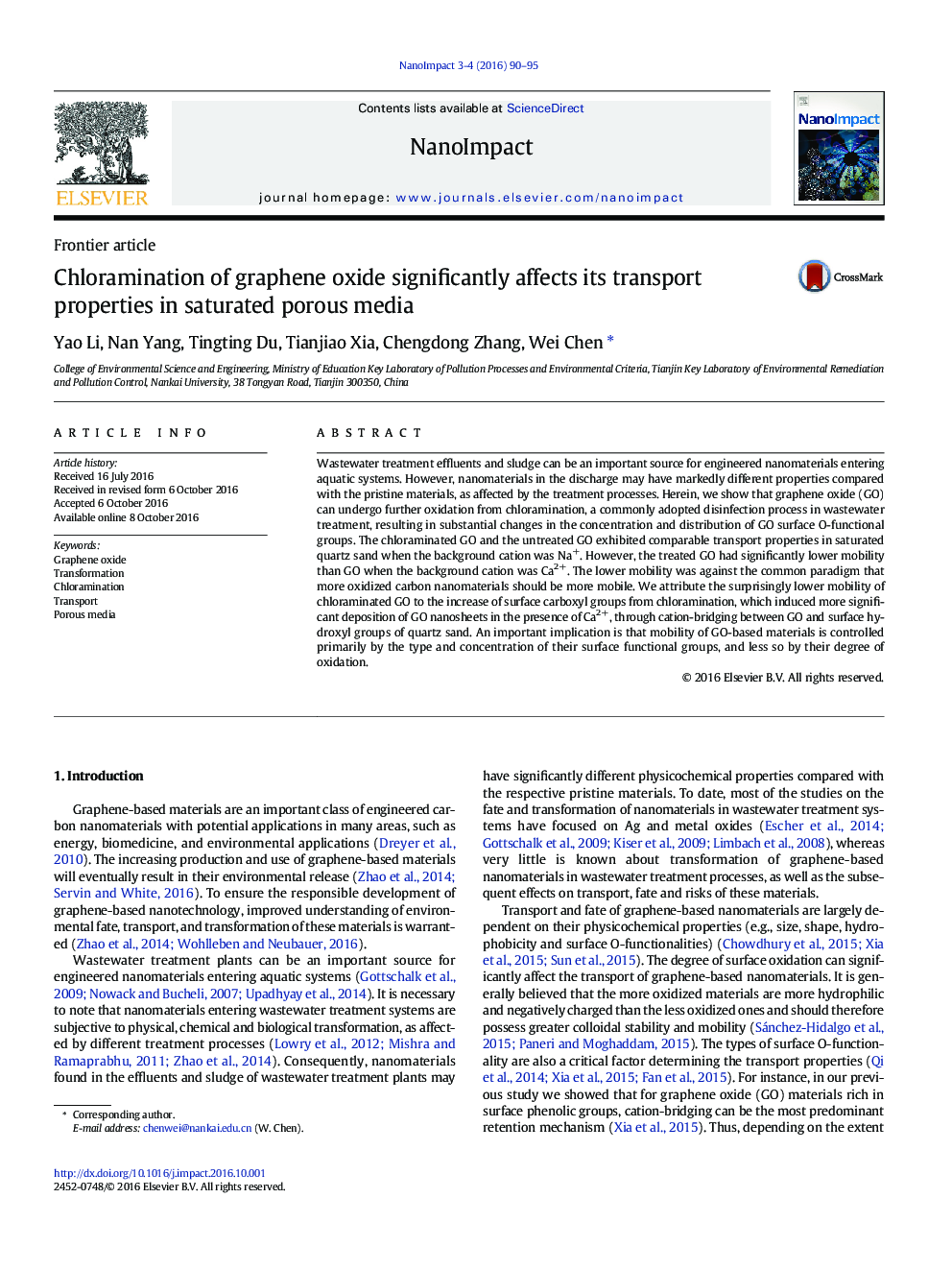| کد مقاله | کد نشریه | سال انتشار | مقاله انگلیسی | نسخه تمام متن |
|---|---|---|---|---|
| 5560732 | 1562023 | 2016 | 6 صفحه PDF | دانلود رایگان |
- Chloramination significantly changes surface chemistry of graphene oxide (GO).
- Chloraminated GO can be less mobile than GO even though it is more oxidized.
- Inhibited transport of chloraminated GO is attributable to increased cation-bridging.
- Transport of GO is highly affected by its O-functional groups that can form complexes.
Wastewater treatment effluents and sludge can be an important source for engineered nanomaterials entering aquatic systems. However, nanomaterials in the discharge may have markedly different properties compared with the pristine materials, as affected by the treatment processes. Herein, we show that graphene oxide (GO) can undergo further oxidation from chloramination, a commonly adopted disinfection process in wastewater treatment, resulting in substantial changes in the concentration and distribution of GO surface O-functional groups. The chloraminated GO and the untreated GO exhibited comparable transport properties in saturated quartz sand when the background cation was Na+. However, the treated GO had significantly lower mobility than GO when the background cation was Ca2+. The lower mobility was against the common paradigm that more oxidized carbon nanomaterials should be more mobile. We attribute the surprisingly lower mobility of chloraminated GO to the increase of surface carboxyl groups from chloramination, which induced more significant deposition of GO nanosheets in the presence of Ca2+, through cation-bridging between GO and surface hydroxyl groups of quartz sand. An important implication is that mobility of GO-based materials is controlled primarily by the type and concentration of their surface functional groups, and less so by their degree of oxidation.
193
Journal: NanoImpact - Volumes 3â4, July 2016, Pages 90-95
